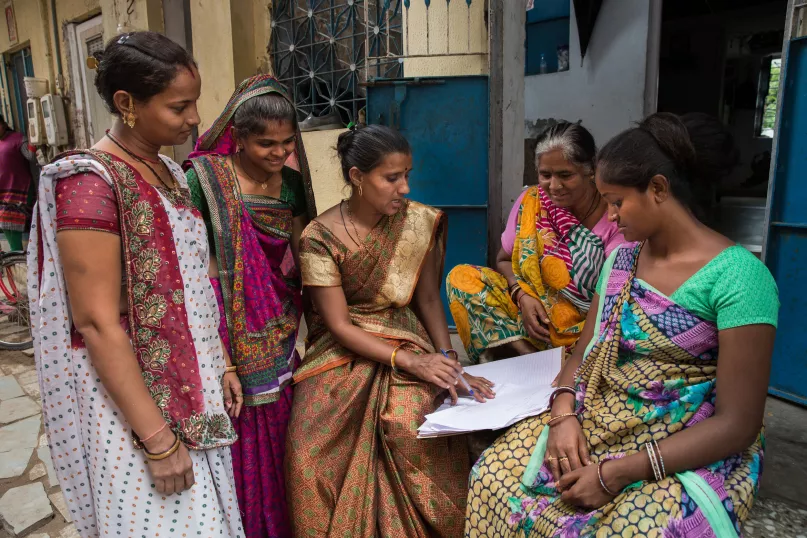Want to Close the Gender Gap in Financial Inclusion? Close the Gender Data Gap First

While attending the annual Global Policy Forum of the Alliance for Financial Inclusion (AFI) in Sochi, Russia earlier this month, I met with Lobna Helal, Deputy Governor of the Central Bank of Egypt. She shared with me her latest mission: to collect sex-disaggregated data from financial service providers so she can quantify and close the gender gap in financial inclusion.
This commitment is more significant than it may appear. Collecting sex-disaggregated data from financial service providers is not international best practice for central banks. Quite the opposite: no G7 country does this. In the G20, only Mexico, Argentina, Brazil, Poland, and Saudi Arabia have publicly prioritized or reported gender data on financial inclusion.
I asked Helal what motivated her to put the Central Bank of Egypt front and center of a gendered approach to financial inclusion, and she credited the influence of AFI and its member countries.
AFI is a peer-learning and knowledge-sharing network of central banks and regulators focused on financial inclusion. AFI is also a key member of Data2X’s Women’s Financial Inclusion Data (WFID) partnership, which aims to improve and expand data on women’s access to and use of financial services through global advocacy, technical support, and knowledge-sharing.
AFI’s 90 members house the majority of the unbanked (57 percent). They are the leading advocates for closing the gender data gap in financial inclusion and all of them have endorsed the Maya Declaration, the world’s first commitment platform that encourages member countries to set concrete financial inclusion targets. So far, at least 27 regulators and central banks have made these commitments gender-specific. For the Central Bank of Egypt, the goal is to cut the gender gap in half by 2025. Cambodia has pledged to reduce the financial exclusion rate of women from 27 percent to 13 percent by 2025, and the Bank of Zambia to halve the gender gap from 10 to 5 percent. Data2X, through AFI, has provided funding to the Central Bank of Egypt and the Bank of Zambia to establish and improve their supply-side sex-disaggregated financial services data. Their experiences will inform Data2X’s future support to build national-level data systems.
With more than 40 percent of the unbanked not in AFI member countries, other groups with reach and influence should follow their example, such as the G20, APEC and OECD.
AFI deserves huge credit for its leadership and attention to the gender data gap in financial inclusion. Yet with more than 40 percent of the unbanked not in AFI member countries, other groups with reach and influence should follow their example, such as the G20, APEC and OECD. The G20 already has a leadership role in this space through the Global Partnership for Financial Inclusion (GPFI). Although GPFI regularly issues calls to action, including to promote gender equality in access to and use of finance by women, they could do more.
For example, a vital tool for the GPFI is a set of financial inclusion indicators on usage, access, literacy, consumer protection and barriers to use. Some are delineated by sex (mostly those on the demand side, thanks to data from the World Bank) but significant gaps remain (e.g. deposits, loans and mobile money). This prevents us from seeing an accurate picture of women’s financial inclusion. Limited sex-disaggregated data on SMEs is another notable gap. The W20 or Women20, a G20 engagement group and network focused on gender-inclusive economic growth, has also called for financial inclusion and gender data in its recommendations and issued a call to action to G20 leaders.
APEC’s 2018 Work Program includes a focus on financial inclusion and SME finance, and members have committed to develop a concrete set of recommendations which should logically include gender data, especially as APEC adopted gender inclusion guidelines in 2017 which specifically encourage sex disaggregated data collection, monitoring and evaluation.
The OECD has a robust work stream on financial inclusion, and recently issued policy guidelines on digital finance and literacy which acknowledge gender-specific barriers to finance and highlight potential benefits of digital finance for women, but do not call for sex disaggregated data in the policy action checklist or list of recommended indicators.
A key rationale for stepping up the call to action for gender data now is that the gender gap in financial inclusion is proving hard to close: it remained at 9 percent in developing countries between 2011 and 2017, according to the World Bank’s latest Global Findex survey.
The World Bank’s goal of universal financial access by 2020 will remain elusive unless there is significant and immediate investment in gender data to drive policy actions designed to address the unique legal and social barriers faced by women in accessing financial services.
Reaching social and economic goals requires reliable and timely data to establish baselines, set targets, shape policy and measure outcomes. Data2X believes that closing the financial gap for women is no exception: gender data is critical.


